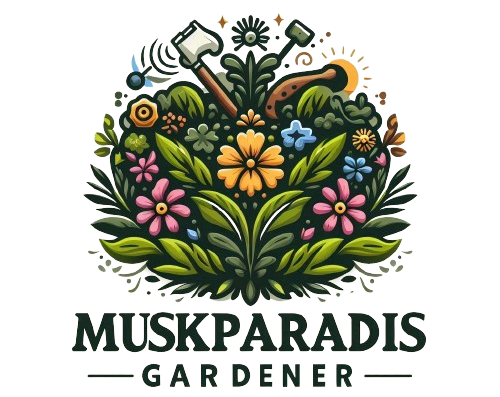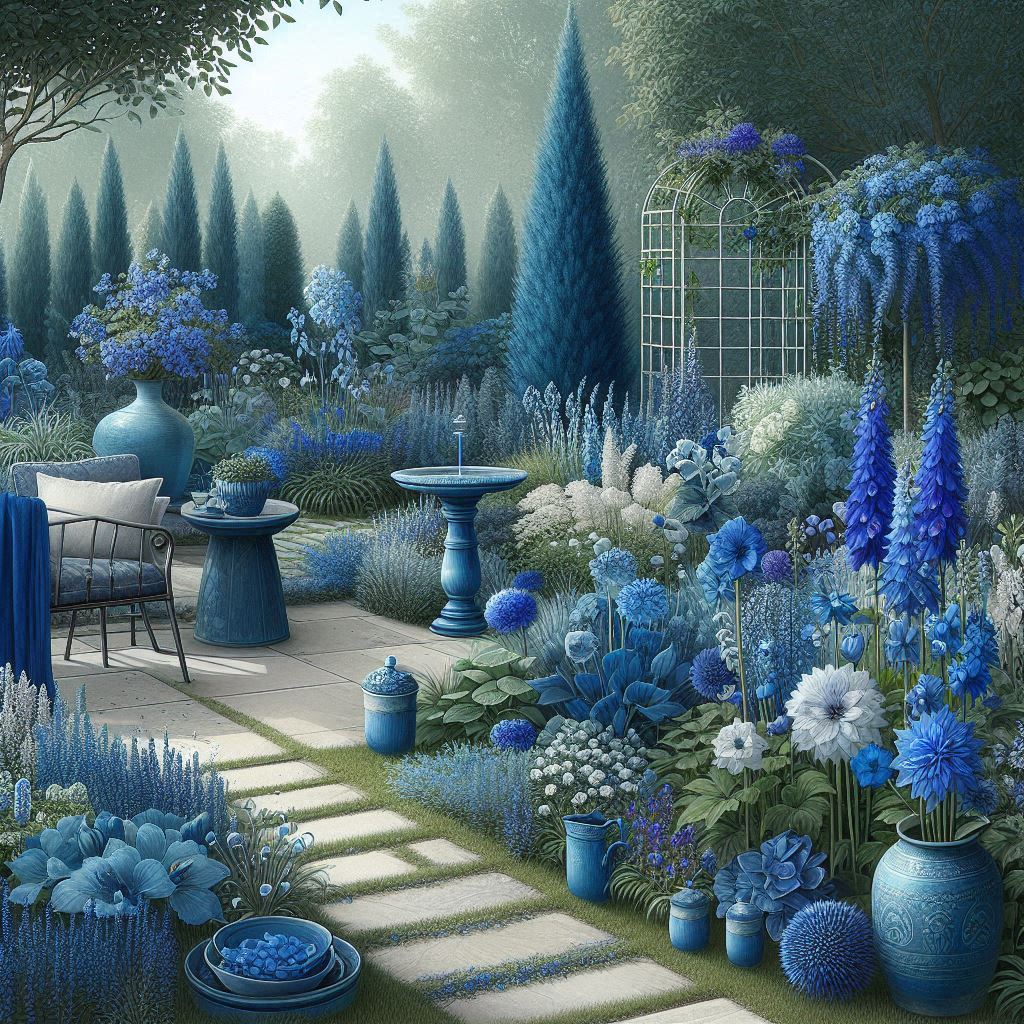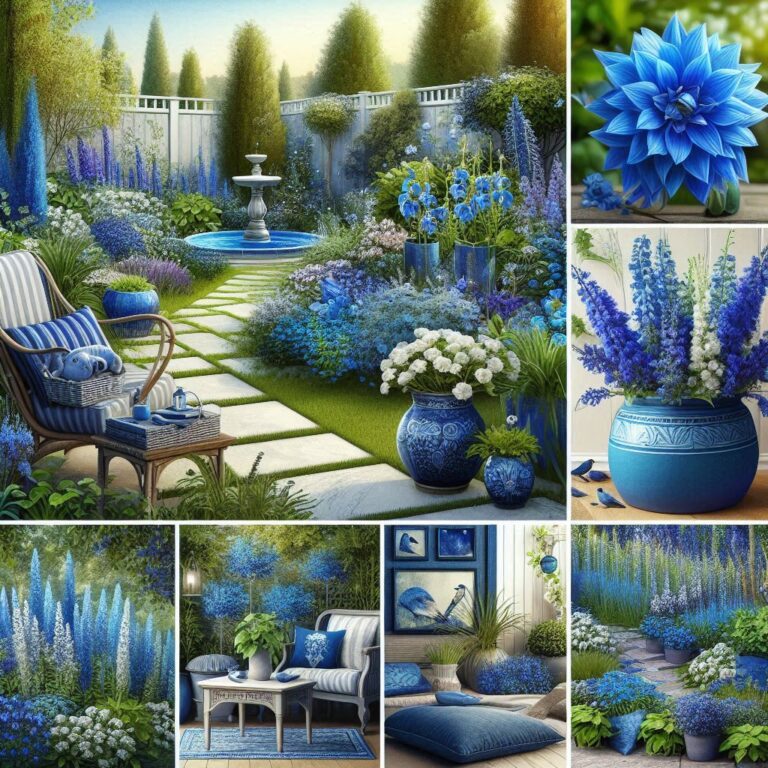Creating a Blue Garden: Tips and Plant Recommendations
Creating a Blue Garden : A blue garden can be a captivating and serene addition to any landscape. The cool, calming hues of blue flowers and foliage create a peaceful atmosphere that can transform your garden into a tranquil retreat. Whether you’re looking to enhance an existing garden or start a new project, selecting the right plants and implementing thoughtful design strategies are key to achieving a cohesive and stunning blue garden.
In this guide, we will explore essential tips and plant recommendations to help you create a beautiful blue garden. From choosing the right mix of annuals, perennials, shrubs, and ground covers, to designing and maintaining your garden, these insights will ensure your outdoor space flourishes with vibrant blue tones throughout the year. Embrace the elegance and tranquility of a blue garden with these expert tips.
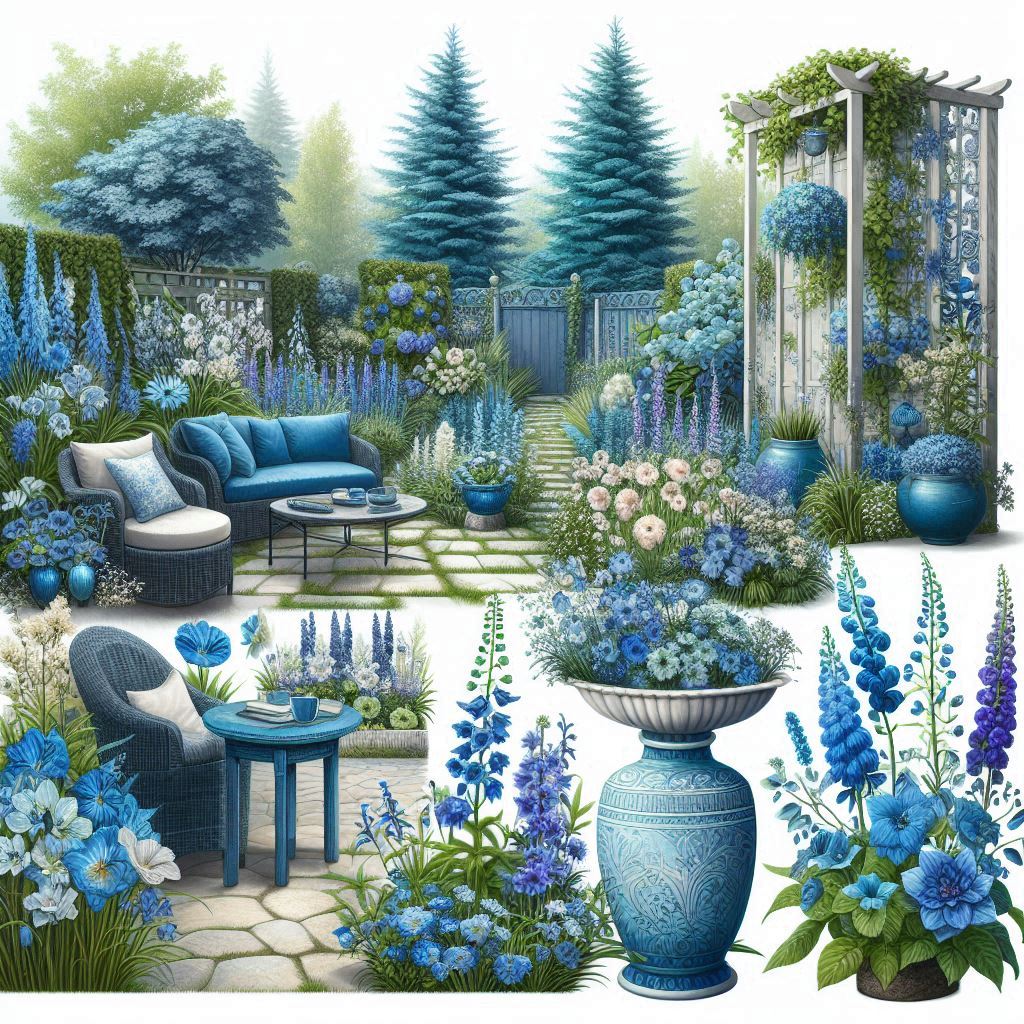
Choosing the Right Blue Plants
Annuals and Perennials
Lobelia
Lobelia is an excellent choice for a blue garden. As an annual, it provides vibrant blue flowers throughout the growing season. Lobelia thrives in cool weather and prefers partial shade to full sun. It works well as an edging plant or in hanging baskets.
Delphiniums
Delphiniums are stunning perennials that add height and drama to any blue garden. They produce tall spikes of blue flowers and bloom in early summer. Plant them in well-drained soil and full sun for the best results. Regular staking may be necessary to support their tall growth.
Bluebells
Bluebells are another perennial favorite. These charming plants bloom in mid to late spring, creating a carpet of blue flowers. They prefer shady spots and moist, well-drained soil. Bluebells are perfect for naturalizing in woodland gardens.
Shrubs and Trees
Bluebeard (Caryopteris)
Bluebeard is a deciduous shrub that blooms in late summer with clusters of blue flowers. It attracts pollinators like bees and butterflies. Plant Bluebeard in full sun and well-drained soil. Pruning in early spring encourages more prolific blooming.
Blue Spruce
Blue spruce trees are known for their striking blue needles. These evergreens add year-round color and structure to your garden. They prefer full sun and well-drained soil. Blue spruce trees can serve as focal points or background plants in larger gardens.
Hydrangeas
Certain hydrangea varieties, like ‘Endless Summer,’ produce beautiful blue flowers. These shrubs thrive in partial shade and rich, well-drained soil. Adjusting soil pH can enhance the blue color of the blooms. Hydrangeas provide lush, long-lasting color in summer.
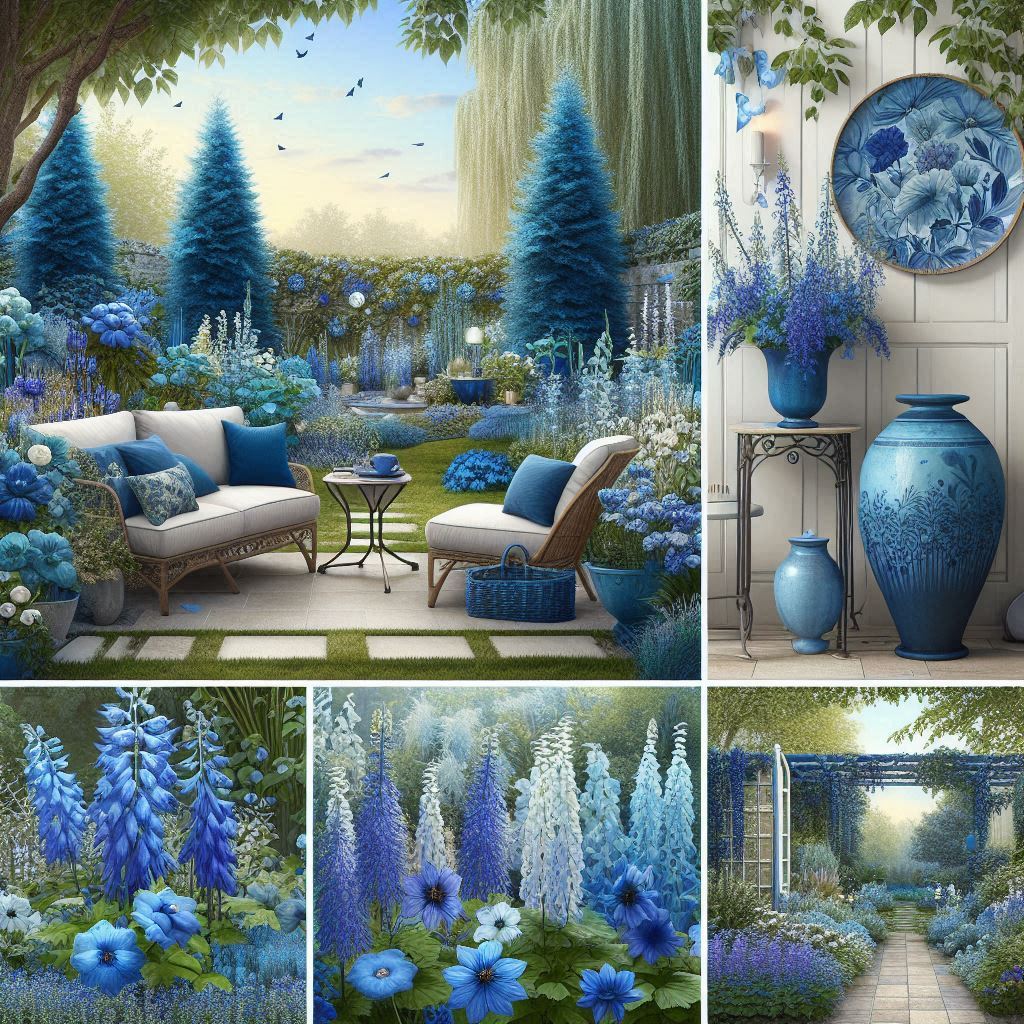
Ground Covers and Vines
Creeping Phlox
Creeping phlox is a low-growing ground cover that produces masses of blue flowers in spring. It’s perfect for covering slopes or filling gaps between larger plants. Plant creeping phlox in full sun and well-drained soil for best results.
Blue Star Creeper
Blue star creeper forms a dense mat of tiny blue flowers. This ground cover is ideal for pathways, between stepping stones, or as a lawn substitute. It tolerates light foot traffic and prefers partial shade to full sun.
Morning Glories
Morning glories are fast-growing vines that produce large, trumpet-shaped blue flowers. They thrive in full sun and well-drained soil. Morning glories are perfect for trellises, fences, or arbors, adding vertical interest to your garden.
Designing Your Blue Garden
Color Combinations Creating a Blue Garden
Complementary Colors
Pair blue flowers with complementary colors like white, yellow, or silver to create a dynamic garden. White daisies and yellow marigolds highlight the blue tones of forget-me-nots and salvia. Silver foliage plants like dusty miller provide a cool contrast.
Monochromatic Scheme
For a more uniform look, stick to various shades of blue. Combine light blue flowers with darker blue varieties to add depth and interest. This approach creates a soothing and cohesive appearance.
Accent Colors
Introduce a few accent colors to break the monotony. Small pops of pink or purple can enhance the overall appeal without overwhelming the blue theme. Use accent colors sparingly for the best effect.
Garden Layout
Tiered Planting
Arrange taller plants, such as delphiniums and blue spruce, towards the back of your garden beds. Place medium-height plants like hydrangeas in the middle, and low-growing plants like lobelia and blue star creeper in the front. This tiered approach ensures visibility and depth.
Focal Points
Incorporate focal points like a blue spruce or a decorative bench to draw the eye and create interest. These elements anchor the garden and provide visual interest even when flowers are not in bloom.
Pathways and Borders
Create pathways using blue-hued gravel or stepping stones to enhance the theme. Edging your garden beds with blue flowering plants or decorative stones can help define spaces and add structure.
Seasonal Interest
Spring Blooms
Start the season with early bloomers like bluebells and forget-me-nots. These plants provide a burst of color as your garden wakes up from winter. Pair them with creeping phlox for a stunning spring display.
Summer Flowers
In summer, showcase plants like lobelia, delphiniums, and hydrangeas. These plants offer continuous color and interest. Incorporate morning glories to add vertical blooms and extend the flowering season.
Fall and Winter
For fall, consider planting asters and Russian sage. These plants bloom later in the season, extending the blue hues into autumn. In winter, focus on evergreen plants like blue spruce to maintain color and structure.
Care and Maintenance
Soil and Watering
Soil Preparation
Most blue-flowering plants prefer well-drained soil with a slightly acidic to neutral pH. Amend the soil with organic matter like compost to improve drainage and fertility. Conduct a soil test to determine pH and nutrient levels.
Watering Techniques
Regular watering is essential, especially during dry periods. Water plants deeply but less frequently to encourage deep root growth. Mulch helps retain moisture and reduce the frequency of watering.
Mulching
Apply a layer of organic mulch around your plants to retain soil moisture and suppress weeds. Mulch also helps regulate soil temperature and adds organic matter as it decomposes.
Pruning and Deadheading
Pruning Shrubs and Trees
Regularly prune shrubs like bluebeard and trees like blue spruce to maintain their shape and health. Pruning in early spring encourages vigorous growth and more abundant flowering.
Deadheading Flowers
Remove spent flowers from annuals and perennials to encourage continuous blooming. Deadheading prevents plants from going to seed and directs energy towards new growth.
Seasonal Clean-Up
Perform a thorough garden clean-up in fall to remove dead leaves and plant debris. This practice helps prevent pests and diseases from overwintering in your garden.
Pest and Disease Management
Monitoring and Inspection
Regularly inspect your plants for signs of pests or diseases. Look for discolored leaves, chewed foliage, or stunted growth. Early detection allows for prompt treatment.
Organic Solutions
Use organic treatments like neem oil or insecticidal soap to manage pests. Encourage beneficial insects like ladybugs and lacewings to naturally control pest populations.
Preventive Measures
Implement good gardening practices such as crop rotation and proper spacing to reduce the risk of disease. Avoid overhead watering to minimize leaf wetness and fungal infections.
Enhancing the Blue Garden Experience
Decorative Elements
Garden Ornaments
Incorporate blue garden ornaments like ceramic pots, bird baths, or benches to reinforce the color scheme. Decorative stones or gravel paths can add texture and complement the blue theme.
Water Features
Add water features like fountains or ponds to create a focal point and enhance the tranquil atmosphere. Blue tiles or stones in water features can further emphasize the blue theme.
Lighting
Install garden lights to highlight key plants and pathways. Blue-hued lights can enhance the theme and create a magical evening ambiance in your garden.
Wildlife Attraction
Pollinator-Friendly Plants
Plant nectar-rich blue flowers like salvia and lavender to attract pollinators such as bees and butterflies. These plants provide essential food sources for beneficial insects.
Bird Feeders and Baths
Set up bird feeders and baths to attract birds to your garden. Birds add movement and sound, creating a lively environment. Blue bird baths can blend seamlessly with the garden theme.
Beneficial Insects
Encourage beneficial insects like ladybugs and predatory beetles by planting a variety of flowers and providing habitats. These insects help control pest populations naturally.
Seating Areas
Comfortable Seating
Add comfortable seating areas, such as benches or swings, to enjoy your blue garden. Position seating in spots that offer the best views of your garden and provide a place to relax.
Shaded Areas
Create shaded areas using pergolas or umbrellas to protect from the sun. Climbing plants like morning glories can provide natural shade and enhance the garden’s beauty.
Pathways and Access
Design pathways that allow easy access to different parts of your garden. Use materials that complement the blue theme, like blue-hued gravel or stepping stones, for a cohesive look.
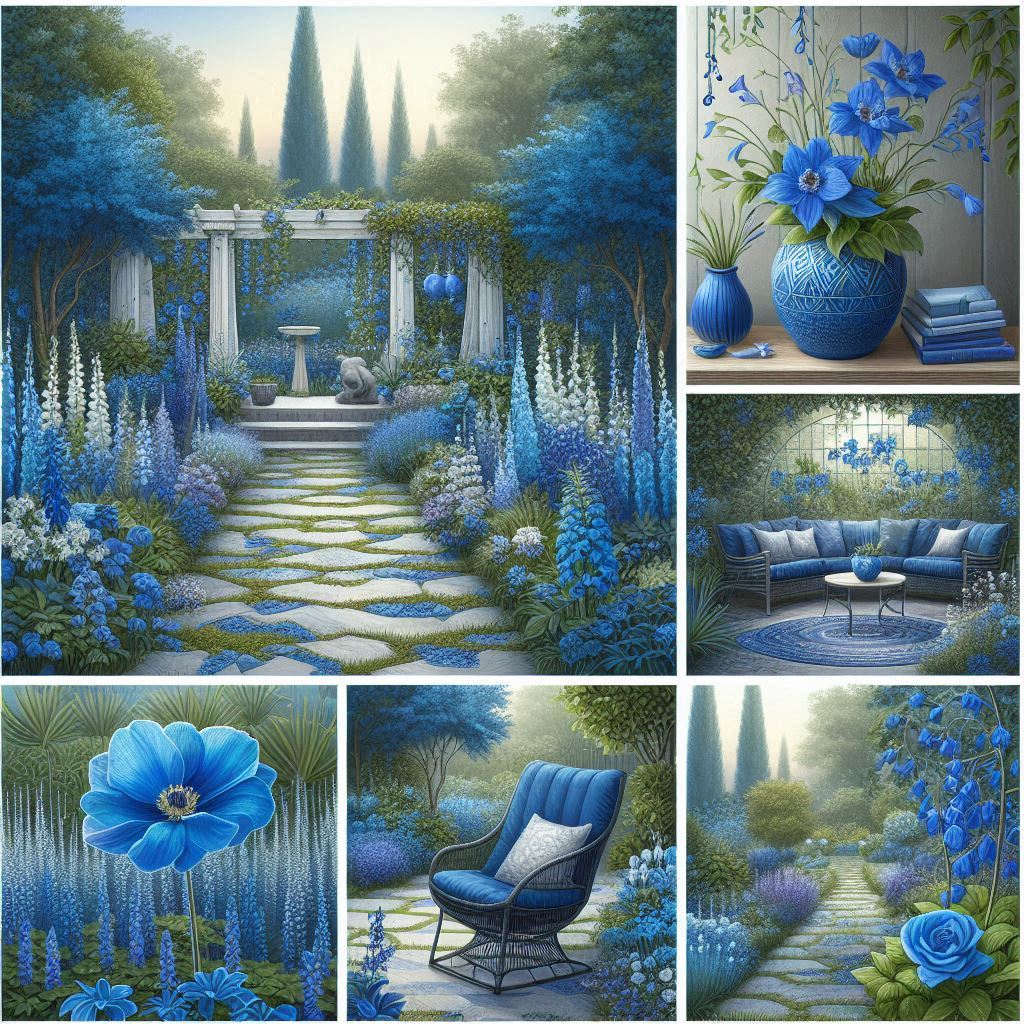
Conclusion Creating a Blue Garden
Creating a blue garden is a rewarding experience that brings beauty and serenity to your outdoor space. By carefully selecting a variety of blue-flowering plants, incorporating complementary colors, and maintaining your garden with proper care, you can enjoy a vibrant and cohesive landscape throughout the seasons. The addition of decorative elements and wildlife-friendly features further enhances the charm and functionality of your garden.
With these tips and plant recommendations, you’re well on your way to creating a stunning blue garden that offers both visual appeal and a peaceful retreat. Embrace the tranquility of blue hues and transform your garden into a captivating oasis that you can enjoy year-round.
